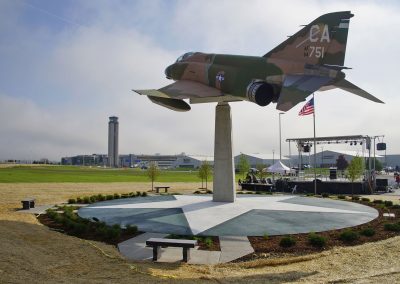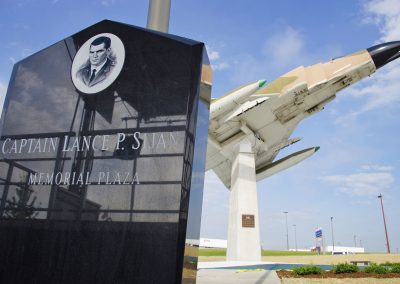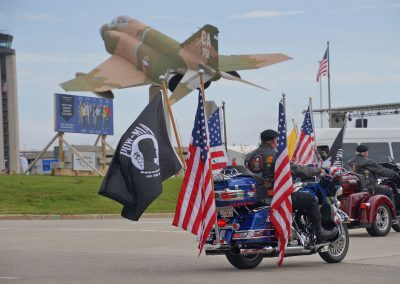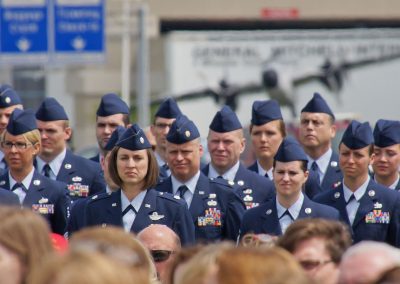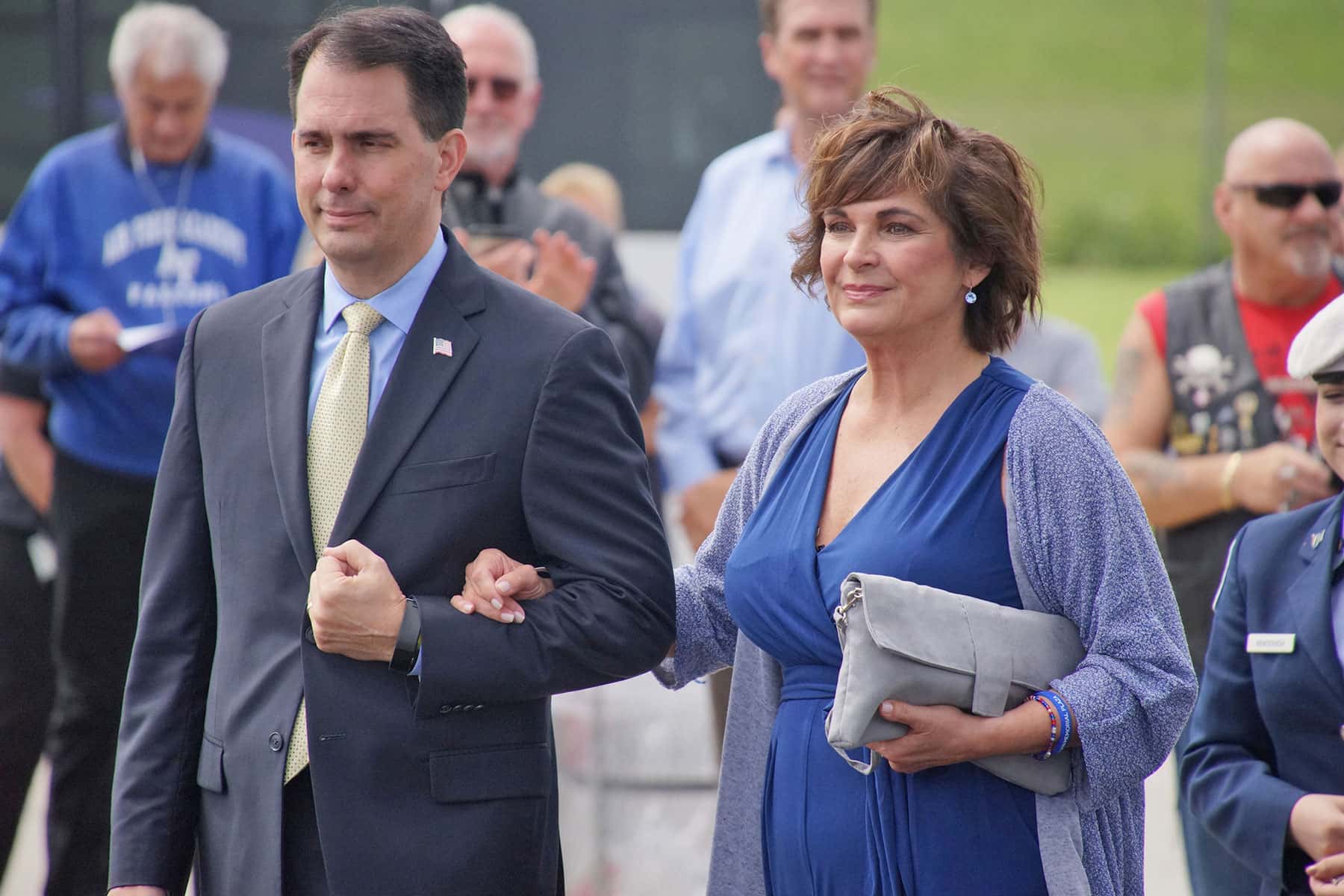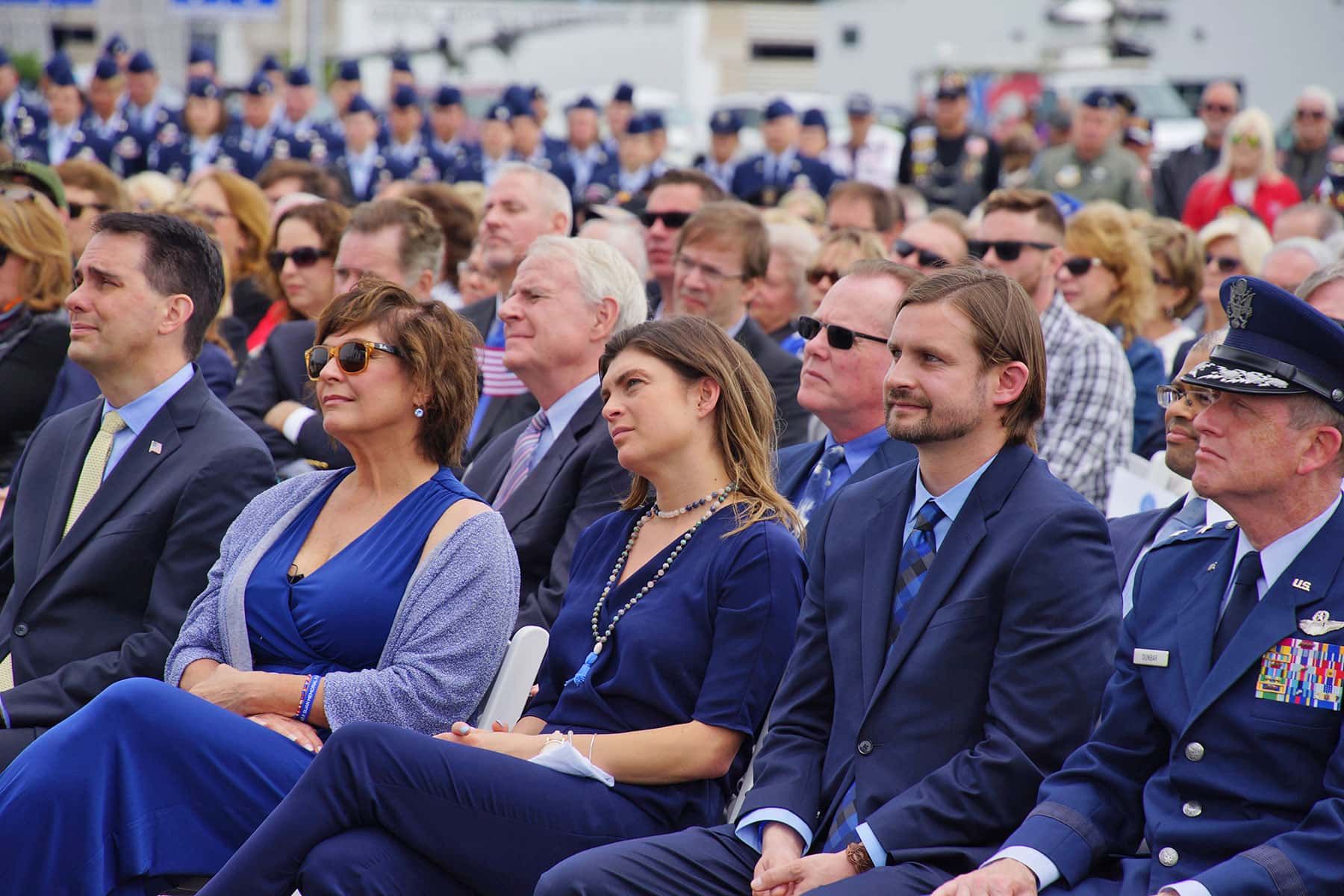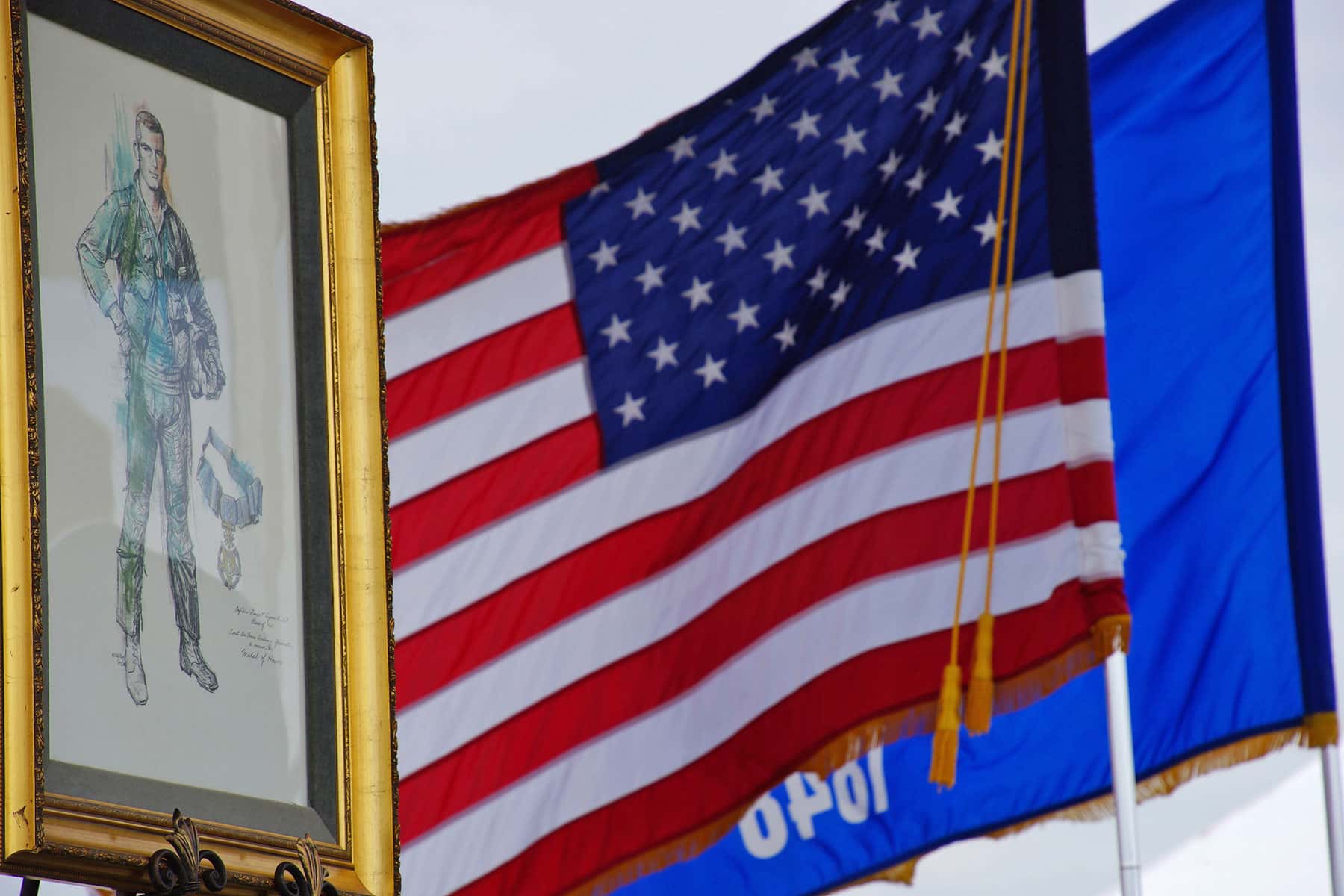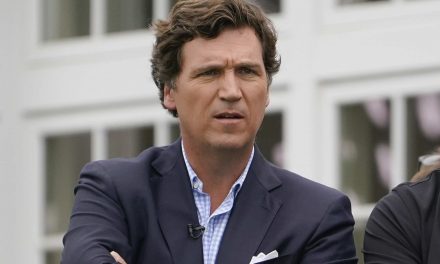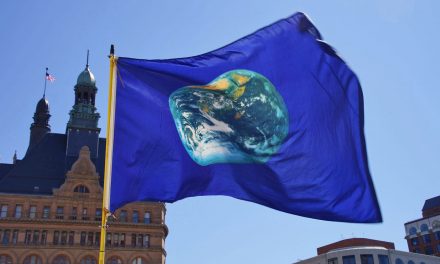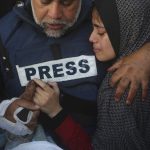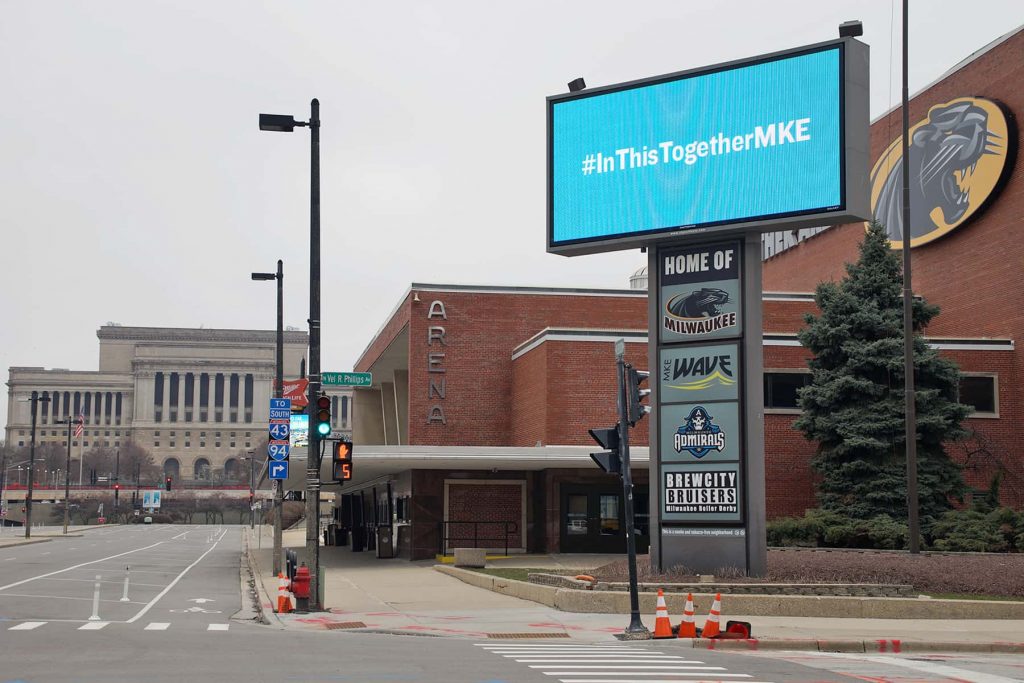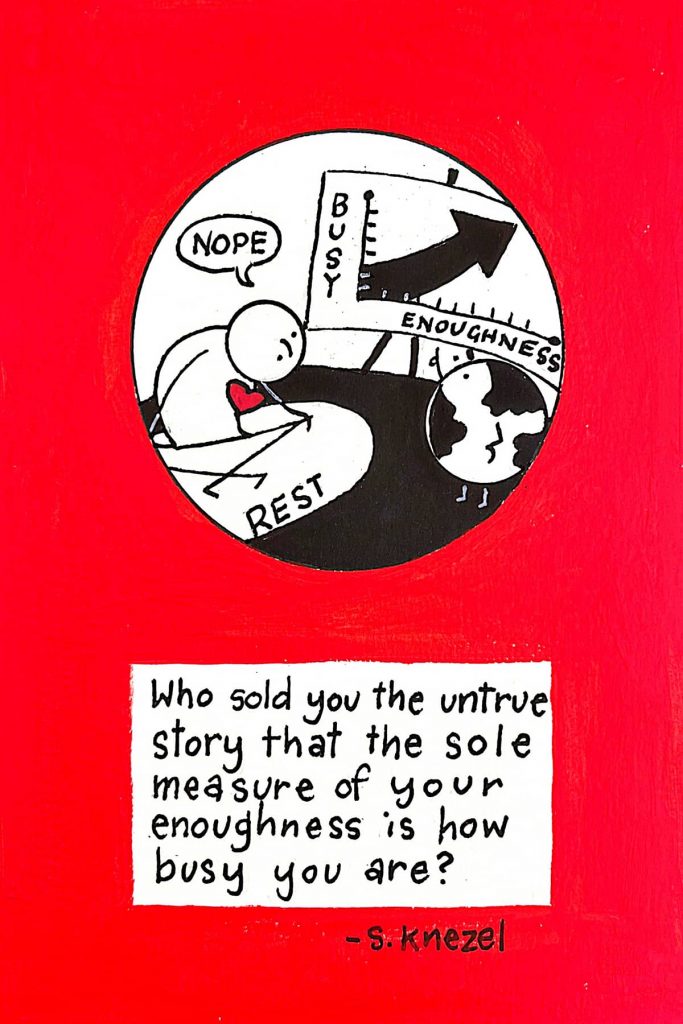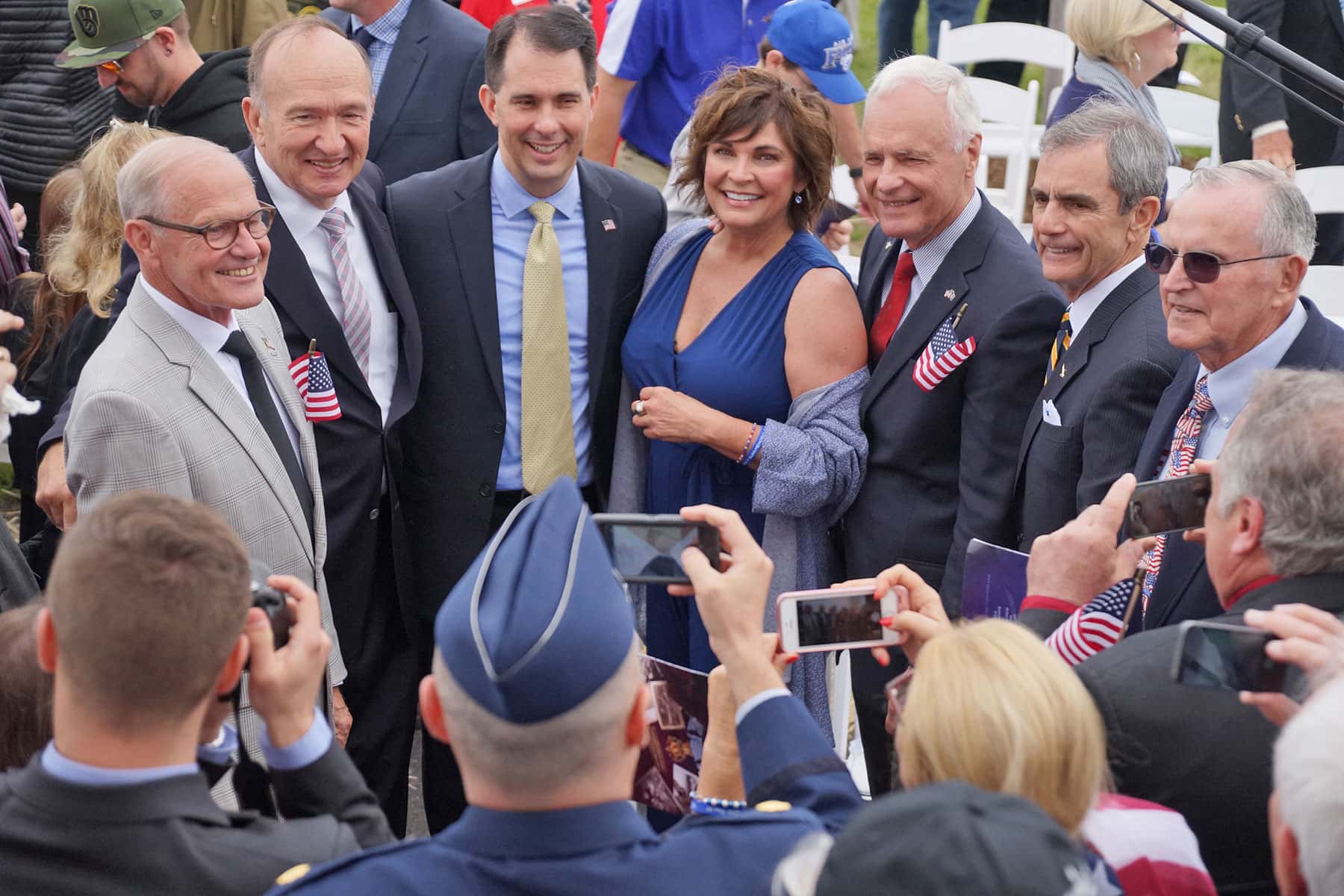
Hundreds of former and current members of the military, along with the general public and Sijan family, gathered from across the country to attend the dedication of the Lance P. Sijan Memorial Plaza at General Mitchell International Airport on May 26.
The permanent tribute to Sijan, and all who have served, comes five decades after his dеаth as a POW in Vietnam, and brought to a close an emotional project that began in 2008. A replica of the 15 ton supersonic aircraft that Sijan had flown in the war, a F-4C Phantom Jet, had been on display at the 440th Air Lift Wing. But when the Air Force Reserve closed its base in Milwaukee, Sijan’s memorial stood all but abandoned. His sister Janine worked to move it to a better location, as to serve as a reminder of her brother’s story for generations to come.
“This plaza was built on a foundation of love, because love rules,” said Janine Sijan Rozina. “I’ve been waiting to say this for a long time, welcome to the Lance P. Sijan Memorial Plaza.”
The event began with a motorcade of several dozen Harley-Davidson bikes, led by the original 1965 red Chevrolet Corvette convertible that Sijan had owned. Gary Wetzel, a fellow Medal of Honor recipient also from Milwaukee, stopped by the dedication to offer his respects to the Sijan family. Wetzel has been recovering from a motorcycle accident that he suffered from last year.
Governor Scott Walker also attended and offered comments to honor the life and legacy of Captain Sijan who, as a recipient of the Medal of Honor, would continue to live on as a great American hero. The Governor proclaimed that Friday, May 26, 2017 would officially be “Lance P. Sijan Day” across Wisconsin.
Major General Donald P. Dunbar, The Adjutant General of Wisconsin, began his remarks by honoring the “general” who led the charge to bring everyone together for the event, Sijan’s sister Janine. He said that she had done so much to honor her brother’s memory, which was a benefit to so many.
“It’s through the eyes of the family that we remember these heroes that we rightly honor and revere, like Captain Lance Sijan. Because the story didn’t start in November 1967,” said Major General Dunbar. “It started before that, with the birth of the young man to a great family, to patient parents who mentored him, and send him to school, and provided him with a wonderful family environment to grow up in, this was a Milwaukee boy.”
Before his jet crash, Sijan flew 51 other sorties, where he launched into the sky to hit a target that defended American troops on the ground. It was a dangerous business and Sijan was exceptional at it. The new plaza stands as a memorial for all those who have served, as a symbol of courage, sacrifice, and leadership.
Medal of Honor citation
The President of the United States in the name of The Congress takes pride in presenting the MEDAL OF HONOR to SIJAN, LANCE P. Rank and organization: Captain, U.S. Air Force, 4th Allied POW Wing, Pilot of an F-4C aircraft. Place and Date: North Vietnam, 9 November 1967. Entered service at: Milwaukee, Wis. Born: 13 April 1942, Milwaukee, Wisconsin.
Citation: While on a flight over North Vietnam, Capt. Sijan ejected from his disabled aircraft and successfully evaded capture for more than 6 weeks. During this time, he was seriously injured and suffered from shock and extreme weight loss due to lack of food. After being captured by North Vietnamese soldiers, Captain Sijan was taken to a holding point for subsequent transfer to a prisoner of war camp. In his emaciated and crippled condition, he overpowered 1 of his guards and crawled into the jungle, only to be recaptured after several hours. He was then transferred to another prison camp where he was kept in solitary confinement and interrogated at length. During interrogation, he was severely tortured; however, he did not divulge any information to his captors. Captain Sijan lapsed into delirium and was placed in the care of another prisoner. During his intermittent periods of consciousness until his death, he never complained of his physical condition and, on several occasions, spoke of future escape attempts. Captain Sijan’s extraordinary heroism and intrepidity above and beyond the call of duty at the cost of his life are in keeping with the highest traditions of the U.S. Air Force and reflect great credit upon himself and the U.S. Armed Forces.
GERALD R. FORD
“Every cadet knows his story. It’s an example for all of us. There are hard days at the Academy, because it’s designed to be tough. But Lance’s story of perseverance keeps us going,” said Colonel Dan Yenchesky, Commander of the 128th Air Refueling Wing and a fellow Air Force Academy graduate.
Colonel Yenchesky read a message from Senator John McCain, who could not attend the ceremony but shared a special relationship with Sijan.
“I wish I could be with you today in Milwaukee to honor the great legacy of Lance Sijan. And I’d like to take a moment to say a few words about my friend and fellow P.O.W., a true American hero. A long time ago, I lived for a time in the company of heroes, men who endured great hardships but who refused to lose faith in their God, their country, and their comrades. I am a witness to a thousand acts of compassion, sacrifice, and endurance. But of all the men whose dignity humbles me, one name is revered among all others.
I never knew Lance Sijan, but I wish I had. I wish I would have had just one moment to tell him how much I admired him, how indebted I was to him for showing me and for showing all of us our duty, and for showing us how to be free. I lived alone once in a room next door to a man who had once lived with Lance Sijan. He was gone before I heard of him, but the men who had lived with him told me his story. His story as I’m sure many of you know is one that was spread throughout the prisons of Hanoi. So that his fellow Americans could draw strength from his example.
It is a story of a free man, from a free country, who kept his dignity to the last moment of his life. Today the war plane of Captain Lance Sijan stands as a reminder of his dignity and sacrifice, something I hope you carry with you when you leave here today. Keep his memory alive, confident in your faith that Almighty God blessed him and gave him the strength to prevail over his enemies. Though they took his life, they could not take his dignity. Lance Sijan prevailed.”
Message from Senator John McCain
Captain Guy Gruters graduated from the Air Force Academy in 1964, a year earlier than Sijan. He had almost a year tour of duty in Vietnam, when one day he was shot out of the sky and captured in enemy territory. Gruters would spend the next 5 1/2 years as a POW, and he cared for Sijan until illness claimed his friend and classmate during their imprisonment at the Hanoi Hilton in North Vietnam.
“When I first saw Lance in prison I didn’t recognize him, but he recognized me. He lost so much weight,” recalled Gruters. “Lance looked like a skeleton and he was covered with infected sores. I looked at him from 6 inches away and didn’t know who he was. I couldn’t believe this was Lance when he told me.”
Lance refuse to give the enemy any information, so he was beaten and tortured multiple times a day. He was a great example for all of the other POWs, like John McCain. Gruters witnessed Sijan’s great mental and moral strength, his commitment and determination to obey his orders to follow the Code of Conduct under such conditions.
Articles of Code of Conduct
The Code of Conduct provides guidance for the behavior and actions of members of the Armed Forces of the United States. This guidance applies not only on the battlefield, but also in the event that the service member is captured and becomes a prisoner of war (POW). The Code is delineated in six articles.
Article I:
I am an American, fighting in the forces which guard my country and our way of life. I am prepared to give my life in their defense.
Article II:
I will never surrender of my own free will. If in command, I will never surrender the members of my command while they still have the means to resist.
Article III:
If I am captured I will continue to resist by all means available. I will make every effort to escape and aid others to escape. I will accept neither parole nor special favors from the enemy.
Article IV:
If I become a prisoner of war, I will keep faith with my fellow prisoners. I will give no information or take part in any action which might be harmful to my comrades. If I am senior, I will take command. If not, I will obey the lawful orders of those appointed over me and will back them up in every way.
Article V:
When questioned, should I become a prisoner of war, I am required to give name, rank, service number and date of birth. I will evade answering further questions to the utmost of my ability. I will make no oral or written statements disloyal to my country and its allies or harmful to their cause.
Article VI:
I will never forget that I am an American, fighting for freedom, responsible for my actions, and dedicated to the principles which made my country free. I will trust in my God and in the United States of America.
“When you hear the story it’s overwhelming, especially at the Air Force Academy. The cadets hear the story and it’s like Lance is some mystical character. But he was a real person, and I did get to know him when Lance and I were young men together,” said Retired Colonel Lee Ellis, personal friend and fellow POW in Vietnam.
Both men went through pilot training together and were assigned the F-4C Phantom Jet. The Vietnam situation was building towards war, and they knew that being in the pipeline to Southeast Asia meant the young pilots were going to get combat training and join the war. As part of their training, they had to take survival courses, now known as Survival, Evasion, Resistance, and Escape (SERE) school.
“That’s the time I got to see into Lance, just how focused he was,” said Ellis. “ He had great confidence but also great humility, and he had a wonderful balance of both. He was not perfect, but he was extraordinary. Lance was someone that we can learn from by his example.”
On November 7, 1967 Ellis was shot down and captured immediately. Sijan came back from a trip in Thailand the next day found out that his friend was down. Then Sijan went down the next day, and both friends eventually ended up in the Hanoi Hilton with Guy Gruters.
The dedication was closed with a special aerial tribute by Team Fastrax, a professional parachute demonstration squad that has a culmination of more than 175,000 skydives. The team members made a precision landing at the edge of the plaza, to the thrill of the crowd.
“Our boy, Lance, continues to bring us together, 50 years later,” added Janine. ”The Lance P. Sijan Memorial Plaza is tangible evidence of what the power of faith and stewardship can do. A made-up mind is a powerful thing. Faith can move mountains, or an F-4C Phantom Jet.”
Lee Matz

